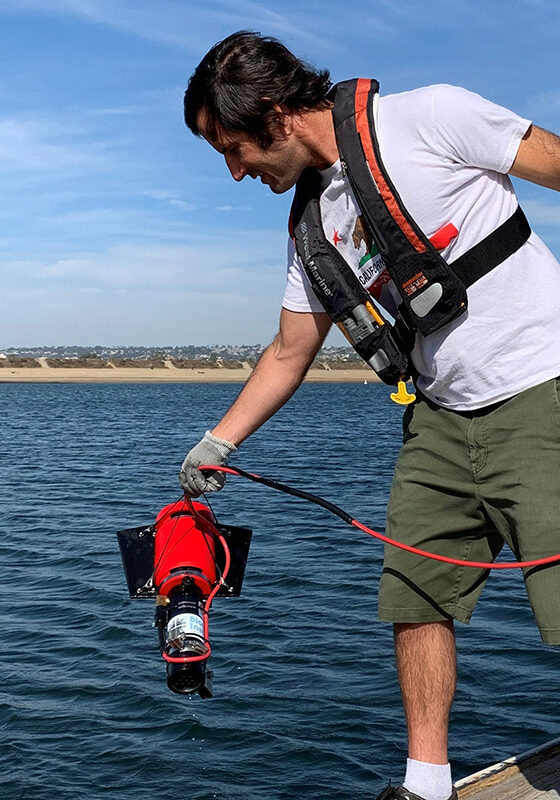XRR – Adaptable instruments for optically diverse environments
The XRR is an economically priced multispectral radiometer for determining apparent optical properties in aquatic systems. Belonging to the same top-of-the-line instrument class as the C-OPS (Compact Optical Profiling System) and other microradiometer-based instruments, the XRR is designed to upgrade the role that was formerly occupied by BSI’s PRR-600 and PRR-2600 radiometers as well as the PRR-800. The XRR is very similar in shape to the PRR-600/PRR-2600 instruments, but is smaller in diameter, weighs less, and has significantly improved performance.
Features
Single housing, integrated system for measuring radiometric variables in optically complex waters; ideal for aquatic profiling in shallow and deep water
Submersible instruments are optimized for measuring vertical profiles of radiance and irradiance at depth; surface reference optimized for use in air
Rapid sampling (15 Hz); slow, freefall descent; adjustable buoyancy; it is hand deployed; and has a 125 m maximum depth
Very wide dynamic range (10+ decades); based on microradiometer technology (the system does not saturate at natural light levels even when the radiance aperture is pointed directly at the solar disk)
Up to 10 discrete microradiometer wavebands radiance and irradiance; spanning the spectral range from 305 nm in the UV to 875 nm in the NIR
Radiance Field-of-view: 7° half-angle in water (compliant with SeaWiFS specification)
Irradiance cosine departure of less than 2% from 0–65° and less than 10% from 65–85°
Accessories include above-water reference irradiance sensors to measure incident irradiance, the BioSHADE shadow band assembly for making diffuse measurements, and the BioGPS for providing integrated GPS position and time in the recorded data files.
XRRs are available in two measurement geometries: XRL and XRE. The XRL, the most common configuration, features 10 optical-filter microradiometer wavebands (selected from 29 different optical filter wavelengths) of in-water downward irradiance (Ed) and 10 wavebands of in-water upwelling radiance (Lu). The XRE nominally uses 10 wavebands of downward irradiance (Ed) and 10 wavebands of upward irradiance (Eu). XRRs also take advantage of a new free-fall flotation collar called the “X-SLOWS,” which allows slow near-surface sampling in an instrument with a traditional "rocket-shaped" design. XRRs use the same microradiometer detector technology as C-OPS, and thus has the same outstanding radiometric performance specifications as C-OPS. Being microradiometer-based, the XRR can use all of the same software and surface solar reference as C-OPS.

